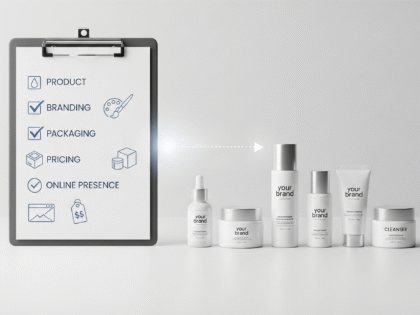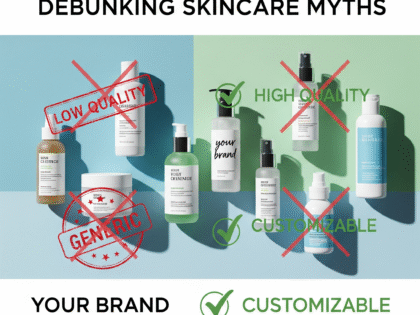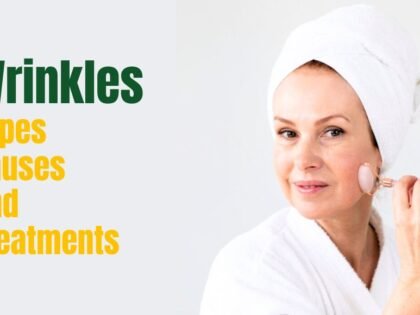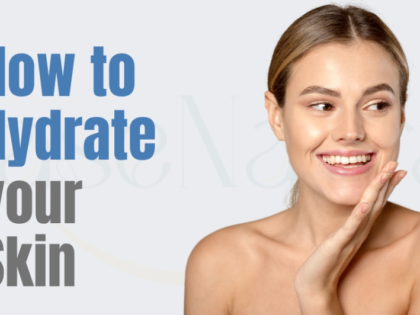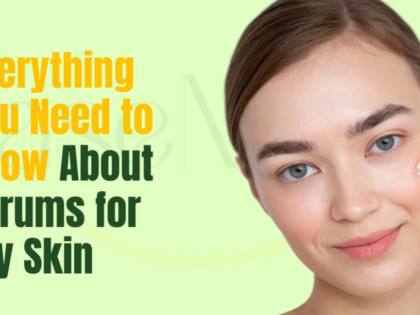Sunscreen Tips for Skin Protection and Sun Safety

Regular use of sunscreen is crucial in protecting the skin from harmful Ultraviolet radiation, aka UV radiation. These radiations are not just the rays that cause some damage to the skin; these are way more dangerous than that. The high-energy direct radiation can cause skin burns and skin cancer if not protected by sunscreens. According to the research published in the Journal of Integrative Dermatology, skin cancer has become the most common cancer diagnosed in the United States. Within ten years, the incidence hiked from 12.6 to 17.0 per 100,000 persons. Per the research findings, direct UV light from the sun is the major culprit.
You may wonder why there has been such a rise in skin cancers and why it is related to exposure to UV light. The answer lies in the fact that with time, the ozone layer has been depleted drastically and of course the change in the tolerability over generations. Now the question arises what should be considered to ensure skin protection and what qualities should sunscreens constitute if it is now necessary to use them? The following guide covers the whole guide from selecting the appropriate Sun Protection Factor (SPF), proper application techniques, and additional sun safety measures to ensure comprehensive protection.
Understanding Sunscreen Basics
Sunscreen is a product with a texture that is more like lotion and works to protect you from the dangerous UV rays of the sun. UV rays damage the skin and can cause skin cancer or wrinkles. As the name indicates, it is a screen between the sun and your skin. However, various other jargon may confuse you while opting for sunscreen.
1- UVA and UVB rays
Almost all of you must have heard the word UV rays, but many are unaware of UVA and UVB. There are three types of UV or ultraviolet rays: UVA, UVB, and UVC. While UVC is absorbed by the Earth’s atmosphere and does not reach us, UVA and UVB rays have significant effects on the skin. UVA rays penetrate deeply into the skin, leading to premature aging, while UVB rays cause superficial damage like sunburns and cancers. Broad-spectrum sunscreens protect against both types.
2- SPF Explained
SPF, or Sun Protection Factor, is a measure of how well a sunscreen will protect skin from UVB rays as compared to unprotected skin. For instance, SPF 30 allows you to stay in the sun 30 times longer without burning. In theory, this should mean that SPF 15 protects the skin half as long as SPF 30—and that SPF 60 would protect the skin twice as long as SPF 30. But in actuality, just because you apply SPF 30 instead of SPF 15 does not mean you get double the length of time protected from the sun. It’s more related to the amount of exposure than how long it lasts.
Expert Sunscreens Buying Tips
When selecting a sunscreen, it’s essential to consider several factors to ensure effective protection and suitability for your skin type. Here are some key indications provided by the American Academy of Dermatology.
1- Opting for Broad-Spectrum Protection
While choosing sunscreens, make sure to look for the bottle labeled “broad spectrum”. It means that the given sunscreen would protect your skin from both UVA and UVB equally. On the other hand, if you buy any sunscreen with a narrow spectrum, you are going to be prone either to UVA or UVB.
2- Choosing the Right SPF for Your Needs
Dermatologists recommend using sunscreen with an SPF of at least 30. An SPF 30 or higher spf in sunscreens blocks approximately 97% of UVB rays and much of UVA radiations. Rationally, to have broad spectrum protection, the UVA protection should be at least 1/3 of the UVB protection. Higher SPFs offer slightly more protection but results do not vary in linear direct proportion.
- SPF 15 blocks 93% of UVB rays
- SPF 30 blocks 97% of UVB rays
- SPF 50 blocks 98% of UVB rays
So, one way of looking at this is that SPF 30 sunscreen only gives you 4% more protection than SPF 15 sunscreen. Since 30 SPF sunscreens are the most easily available products, they are considered to be optimal.
3- Considering Water Resistance
There is a general misconception that there is no need to apply skincare products if going swimming. Likewise, it is thought that sweating may wipe off all the applied sunscreen when in the sun, what good it is going to do with the skin then? Well, therefore, it is necessary to go for a sunscreen that is water resistant. Although according to FDA Standards, no sunblock can actually be “waterproof” or “sweatproof”, sunscreens with SPF Protection 40 or 80 minutes after submersion are considered to be “water resistant” that significantly protect your skiing from the harms of the sun. So make sure to pick a sunblock with the “water-resistant” label and not the “waterproof” label while buying sunscreens.
4- Choose the Right Type for Your Skin
There are various kinds of sunscreens exist that vary in components making them suitable for different skin types. For instance, mineral sunscreens contain active ingredients like zinc oxide or titanium dioxide and sit on the skin’s surface to physically block UV rays. On the other hand, chemical sunscreens absorb UV radiation through their chemical bonds. Although chemical sunscreen works for normal skin somehow, mineral options containing zinc oxide or titanium dioxide are often recommended for sensitive skin.
5- Examining different forms of sunscreen
The term “sunscreen formulation” often refers to the form of sunscreen and how it feels and appears on a person’s skin. There are many common sunscreen formulations available on the market. Try to find out, what can be most suitable for you based on your routine and average exposure to the sun.
- Sprays are ideal for hard-to-reach areas and those with body hair.
- Creams and lotions are versatile options for various skin types.
- Sticks offer lightweight, travel-friendly convenience, perfect for sensitive areas.
- Powders suit sensitive skin and makeup lovers, providing easy reapplication.
- Gels come in oil-based for nourishing hydration for oily and acne-prone skin.
- Hybrid sunscreens are often mixed with BB creams to get merged into makeup.
Expert Sunscreen Application Tips
While applying sunscreen, keep the following tips recommended by the American Academy of Dermatology in mind.
1- Make Sunscreen a Daily Habit Regardless of Weather
UV rays penetrate through clouds and glass, meaning sun protection is essential even on overcast days or indoors. Incorporate sunscreen into your morning routine, applying it after skincare and before makeup. This daily habit significantly reduces cumulative sun damage over time.
2- Apply 20 Minutes prior to the sun exposure
Since sunscreen requires time to be absorbed in the skin, whenever plan to go out in the sun, sunscreen must be applied 20 minutes before the sun exposure, Further skin must be clean and dry so that skin may directly reach the required area.
3- Choose Broad-Spectrum Sunscreen for Complete Protection
As mentioned earlier, broad-spectrum sunscreens shield your skin from both UVA and UVB rays. Therefore, use an SPF of at least 30 to get comprehensive coverage from sun rays and keep yourself safe.
4- Apply the Right Amount of Sunscreen
For the face, neck, and back of ears, a nickel-sized amount or a half teaspoon is recommended. Apply a teaspoon for each limb, front, and back of your body. Insufficient application significantly reduces the effectiveness of SPF, leaving your skin vulnerable to UV damage.
5- Reapply Every Two Hours or After Water Exposure
Sunscreen naturally wears off due to sweating, swimming, or towel drying. Reapply every two hours to maintain protection, and immediately after water activities, even if the sunscreen is labeled water-resistant. Neglecting reapplication is one of the most common mistakes leading to sunburn.
6- Don’t Skip Hard-to-Reach and Often-Ignored Areas
Ensure complete coverage by applying sunscreen to overlooked areas such as the ears, back of the neck, tops of feet, and scalp (if exposed). These spots are highly susceptible to sunburn and skin cancer. For the lips, use a balm with SPF 30 or higher for adequate protection.
Beyond Sunscreen – Holistic Sun Protection Tips
According to the US Food and Drug Authority (FDA), the following habits must also be practiced to get holistic sun protection.
1- Practice Smart Sun Habits
Minimize spending time in direct sunlight during peak hours (10 AM–4 PM). Seek shade whenever possible, and combine these strategies with sunscreen and protective clothing for comprehensive sun safety.
2- Wear a Wide-Brim Hat for Extra Coverage
Protect your face, ears, and neck by wearing a wide-brim hat. Brim hats are an effective way to block direct sunlight and reduce your risk of skin cancer caused by prolonged UV exposure.
3- Opt for Sun-Protective Clothing
Incorporate sun-protective clothing into your wardrobe, such as long-sleeved shirts and pants made from tightly woven fabrics. These items add layer of defense against harmful UV rays.
4- Keep Children Protected
Children’s skin is more delicate and vulnerable to sun damage. Always ensure they stay in shaded areas and wear water-resistant sunscreen when swimming or playing near water.
Base Natural laboratory-certified serum is specially formulated to combat acne, dryness, and dullness, helping you achieve radiant, healthy skin. Perfect for pairing with your sunscreen routine for all-day protection and nourishment!
Bottomline
Regular use of sunscreen is essential to protect your skin from harmful ultraviolet (UV) radiation, reducing the risk of sunburn, premature aging, and skin cancer. By understanding the science behind sunscreen and adopting effective sun protection practices, you can safeguard your skin’s health and maintain its vitality for years to come. Learn more about how to protect your skin from the sun.
Read the secrets of Saffron for a brighter and unlock the natural power of this luxurious ingredient to lighten dark spots, even skin tone, and achieve glowing skin.
Discover the benefits of saffron for skin whitening—try it today!
FAQs About Sunscreen and Sun Protection
1- Is Sunscreen Necessary on Cloudy Days?
Yes, up to 80% of UV rays can penetrate clouds, so daily sunscreen use is essential.
2- Can Sunscreen Prevent Skin Cancer?
Regular use of broad-spectrum sunscreen reduces the risk of developing squamous cell carcinoma by about 40% and melanoma by 50%.
3- How Does Sunscreen Work with Other Skincare Products?
Apply sunscreen as the final step in your morning skincare routine, after moisturizing and before makeup.



